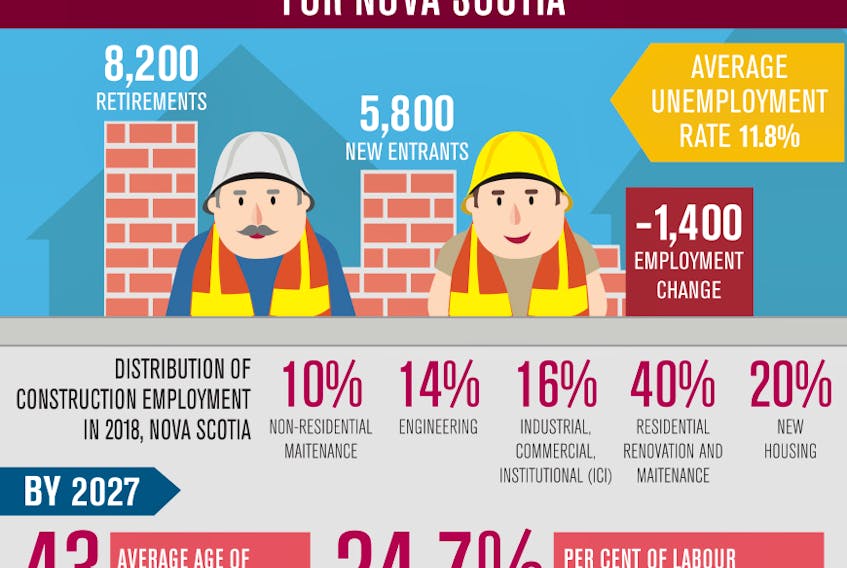As principal of the Nova Scotia Community College Pictou Campus in Stellarton, Dave Freckelton makes a point of keeping his finger on the pulse of Nova Scotia’s job needs.
It’s crucial for him to see students trained for positions that they can get jobs in after they graduate.
In the past (such as when TrentonWorks was operating full tilt), the NSCC had welding courses offered 24 hours a day to help meet the demand. Other times they have to cut programs due to lack of interest.
When it comes to looking at statistics surrounding those trends, often those numbers need to be examined in a broader context, Freckelton said.
“I don’t think you can rely on the data as solidly as you could 15 or 20 years ago,” he said.
This week BuildForce Canada released a report which said that attracting, training, and keeping the next generation of skilled workers in Nova Scotia will be an industry necessity to counter the retirement of approximately 8,200 construction workers this decade, according to their latest labour market forecast.
“It will take a concerted effort to replace up to a quarter of the province’s construction workforce that’s planning to retire in the next 10 years,” said Bill Ferreira, executive director of BuildForce Canada. “Compounding the challenge is the reality that Nova Scotia has one of the oldest populations in Atlantic Canada and a shrinking pool of young workers to draw from.”
Approximately 25 per cent of the province’s construction workforce is expected to retire over the next 10 years their report showed.
“Nova Scotia’s non-residential sector should become a stable source of construction employment this decade,” added Ferreira. “In addition to ongoing recruitment, the industry may need to encourage greater mobility of workers between the non-residential and residential sectors to overcome the retirement challenge.”
There are other factors Freckelton looks at when he sees these statistics. One is the fact that many people are working beyond what was traditionally considered retirement age, which could limit the impact of the projected number of retirees.
“There’s no magic age anymore,” he said.
He said it’s also important to consider what’s happening out west. When there is a downturn in the oil industry, for instance, Nova Scotia often sees many of their trades people return to the province.
BuildForce Canada’s 2018–2027 Construction and Maintenance Looking Forward forecast shows that as current major projects end, and new housing is expected to cycle down throughout the decade, employment is sustained by steady levels of industrial, commercial and institutional (ICI) building construction along with rising maintenance requirements and modest growth in home renovation work. Completion of the Maritime Link transmission line, the Halifax Convention Centre and the Macdonald Bridge may lead to a modest decline in construction employment this year. A new granite quarry, the twinning of a highway and other infrastructure work, however, should sustain related employment going forward.
Freckelton for his part will continue to closely monitor the situation so he can steer students on the right path to employment. He added it’s important for students to not just choose something they can find a job in but also something they’ll enjoy.
“We’re careful about encouraging students to react to trends. We want to make sure the program is a right fit.”
He said currently 87 per cent of their students are employed with the majority of those finding jobs in their field of study.









